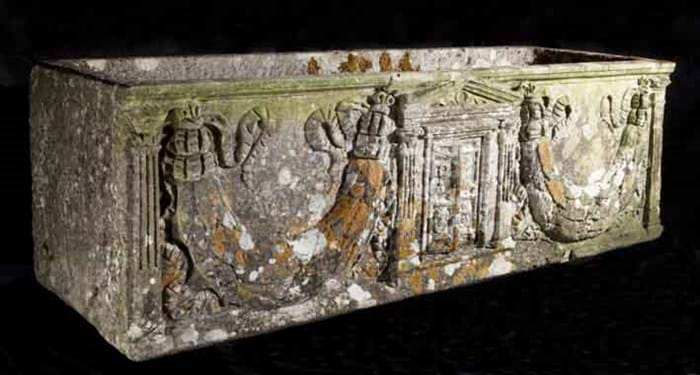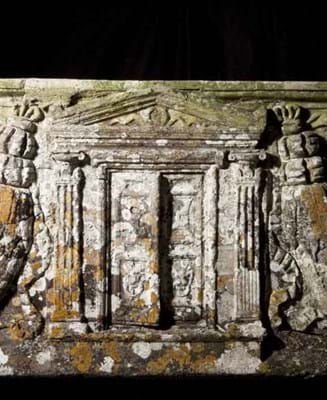In conversation with the owner, auctioneer Guy Schwinge discovered the family had acquired the sarcophagus almost 100 years ago at the auction of the collection of Sir John Charles Robinson at Newton Manor in Swanage. It emerged, too, that the auctioneer in 1913 had been none other than Hy. Duke & Son.
Born in Nottingham, Sir John Charles Robinson (1824-1913) was one of the greatest connoisseurs of his age: appointed Queen Victoria's Surveyor of Pictures and, in 1852, the first Superintendent of the Art Collections at the South Kensington Museum (better known as the V&A), where he was primarily responsible for building the collections of ancient and Renaissance art.
His journals are held by the Ashmolean in Oxford.
The decoration to the sarcophagus, measuring 7ft 11in (2.41m) wide, comprises a pedimented doorway, the door slightly ajar, flanked by boldly carved swags of laurel tied with ribbon.
Academic opinion has it that the quality of the carving (deemed too fine to be Romano-British) suggests that it was made in Italy for a wealthy individual, probably in the late 2nd or early 3rd century. The simply hewn, undecorated back indicates the sarcophagus once formed part of a larger high-status monument - an independent mausoleum where the tomb was placed against a wall.
No information has surfaced as to where Robinson acquired it (it was probably purchased during one of the many seasons he spent travelling for the museum in Italy and Spain), but a provenance with a clear line of ownership for over a century was nonetheless one of its many commercial attractions.
Despite the weathered surface and areas of damage and crude repair, on September 28 three telephone bidders competed for several minutes before one of them secured it with a bid of £80,000 (plus 19.5% buyer's premium).








